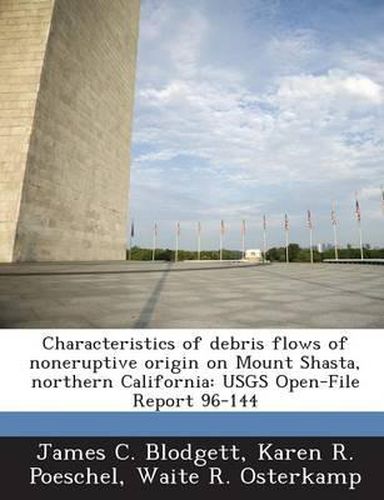Readings Newsletter
Become a Readings Member to make your shopping experience even easier.
Sign in or sign up for free!
You’re not far away from qualifying for FREE standard shipping within Australia
You’ve qualified for FREE standard shipping within Australia
The cart is loading…






Studies of Mount Shasta indicate that eruptive activity has occurred, on the average, once every 800 years. Debris flows and deposits of non- eruptive origin, in addition to those associated with eruptive activity (lava flows, pyroclastic flows, and ash fall), inundate the fans and channels and can endanger people or property on the flanks of the mountain. This study evaluates the source and characteristics of historical noneruptive debris flows in the vicinity of Mount Shasta. At least 70 debris flows of noneruptive origin that occurred during the last 1,000 years have been identified in various stream channels on Mount Shasta. Of the four areas around the mountain, the most active are the McCloud River and The Whaleback-Ash Creek Butte depression; the Sacramento River area is the least active. Between 1900 and 1985, 37 debris flows occurred on different streams, with an average interval of 2.3 years between flows. Since 1900, Mud Creek (nine flows) and Whitney Creek (six flows) have been the most active channels. The path followed by a debris flow is not always at the lowest point in the channel, and the extent of downstream movement depends on the size of the flow. Former channels are inundated by the new flows and deposits, and new channels are eroded. In time, most of the entire channel between valley walls is subject to reworking. Most debris-flow deposits ranged in thickness from 0.4 to 2.5 meters. Thickness tends to decrease in a downstream direction. The deposits are generally of a convex shape, highest in the middle and lowest near the original valley wall. The ratio of water to solids in the slurry- sediment mixture of debris flows averages 68 percent by volume.
$9.00 standard shipping within Australia
FREE standard shipping within Australia for orders over $100.00
Express & International shipping calculated at checkout
Studies of Mount Shasta indicate that eruptive activity has occurred, on the average, once every 800 years. Debris flows and deposits of non- eruptive origin, in addition to those associated with eruptive activity (lava flows, pyroclastic flows, and ash fall), inundate the fans and channels and can endanger people or property on the flanks of the mountain. This study evaluates the source and characteristics of historical noneruptive debris flows in the vicinity of Mount Shasta. At least 70 debris flows of noneruptive origin that occurred during the last 1,000 years have been identified in various stream channels on Mount Shasta. Of the four areas around the mountain, the most active are the McCloud River and The Whaleback-Ash Creek Butte depression; the Sacramento River area is the least active. Between 1900 and 1985, 37 debris flows occurred on different streams, with an average interval of 2.3 years between flows. Since 1900, Mud Creek (nine flows) and Whitney Creek (six flows) have been the most active channels. The path followed by a debris flow is not always at the lowest point in the channel, and the extent of downstream movement depends on the size of the flow. Former channels are inundated by the new flows and deposits, and new channels are eroded. In time, most of the entire channel between valley walls is subject to reworking. Most debris-flow deposits ranged in thickness from 0.4 to 2.5 meters. Thickness tends to decrease in a downstream direction. The deposits are generally of a convex shape, highest in the middle and lowest near the original valley wall. The ratio of water to solids in the slurry- sediment mixture of debris flows averages 68 percent by volume.